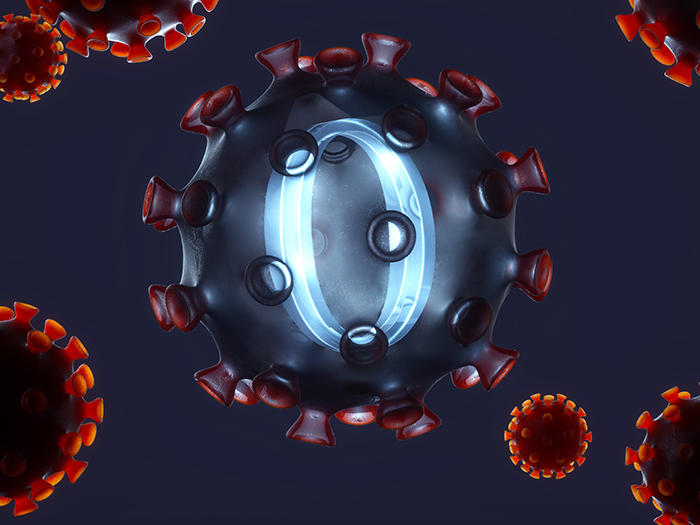Almost Two Years into the Pandemic, Why Aren’t We Paying More Attention to Long-COVID?

It’s been almost two years since the first cases of COVID-19 were reported. In that time, we’ve experienced a master class in just how unprepared the U.S. was for a global pandemic.
First, there were the early days in March 2020 when hospitals were overwhelmed by the virus.
Since then, the situation hasn’t changed much. Every day more than 1,000 Americans are still dying from COVID-19.
This week, 54% of U.S. hospitals were under high or extreme stress due to the virus. These issues have been exacerbated by staffing shortages as burnt out doctors and nurses buckle under the stress and quit their jobs. As the Omicron variant sweeps across America, many of these issues may worsen over the next few months.
“What’s amazing about this pandemic has been the fluidity,” said Dr. Michael Choo, chief medical officer and senior vice president, Paradigm.
“I think the workers’ comp industry, because of the confusing nature of COVID-19, is really at a state of flux because there’s no one approach that everyone can point to and use as a standard.”
The current wave of the pandemic will certainly bring more chaos. But as we prepare, there is one crucial area that many are still overlooking: the effects of long-COVID.
The disease, which the National Institutes of Health (NIH) has dubbed post-acute sequelae SARS-CoV-2 infection (PASC), manifests in the form of severe fatigue, brain fog, loss of taste and smell, amongst other possible symptoms.
An October report from NCCI looks at the effects long-COVID could have on disability. Authored by Choo, the report breaks down the number of people impacted by the disease and the effects it could have on workers’ comp.
The Report at a Glance
The report separated those with lingering COVID-19 symptoms into two groups.
The first are people who experienced severe illness as a result of the virus. Of that group, 76% experience persistent symptoms due to permanent organ damage.
The other group are those that had a mild COVID-19 infection. About 10% of this population has symptoms that last beyond four weeks.
“At least if we can identify an organ system that’s been damaged or organ structure has been damaged … Those symptoms obviously exist because there’s a clear relationship,” Choo said. “But where it gets really confusing are those people who have the so-called nonspecific constitutional symptoms, they’re very subjective.”
Within these groups, Choo said that long-COVID could be further divided by recovery time. He pointed to a JAMA review of 57 different studies into the phenomena, which found that 54% of COVID survivors experience at least one lingering symptom at one month, 55% between 2-5 months and 54% experience symptoms for six months or longer.
PASC symptoms tend to fall into six groupings, NCCI reported. There are cardiovascular symptoms, which cover chest pain, palpitations, fatigue and dizziness; pulmonary symptoms, which include shortness of breath, wheezing and activity intolerance; endocrine symptoms, which encompass excessive thirst, weight loss and changes to the menstrual cycle; autoimmune symptoms, which cover stiffness, blurry vision and tingling in the extremities; and mood and sleep disorders.
Many patients will also experience mental health symptoms, including anxiety, depression and PTSD as a result of traumatic experiences being hospitalized for COVID-19 or from a loss in quality of life.
“There is definitely a mental health and behavioral component that seems to be very prevalent with COVID-19 infected patients who have recovered,” Choo said. “They have high rates of anxiety as well as depression.”
What Are the Long-Term Disability Implications?
Though estimates of the prevalence of PASC vary wildly, even conservative estimates suggest this could be a mass disabling event.
If you take a conservative estimate that just 5% of people who contract COVID-19 will develop PASC, that means that over 2 million Americans will be affected, possibly permanently.
PASC symptoms tend to improve over time, with most people getting their smell and taste back within 2-4 weeks and issues of fatigue, cognitive issues, chest tightness, and psychological effects lasting between 3 to 6 months — though some experience persistent issues for nine months or longer.
Treatments are only just developing. Choo pointed to graded exercise or physical therapy programs as a potential solution for those with fatigue or exercise intolerance. Others have advocated for radical rest.
Even with some eventually recovering from long-COVID, many people will be unable to work for at least some length of time.
And some of these costs will be picked up by the workers’ compensation system. A number of states already have workers’ compensation presumptions for the virus that include at least some of the workforce. Choo said payers may need to start thinking of COVID as a long-term or catastrophic claim.
“Unfortunately, it’s going to add to the workers’ compensation claim costs and disability payments,” Choo said. &










